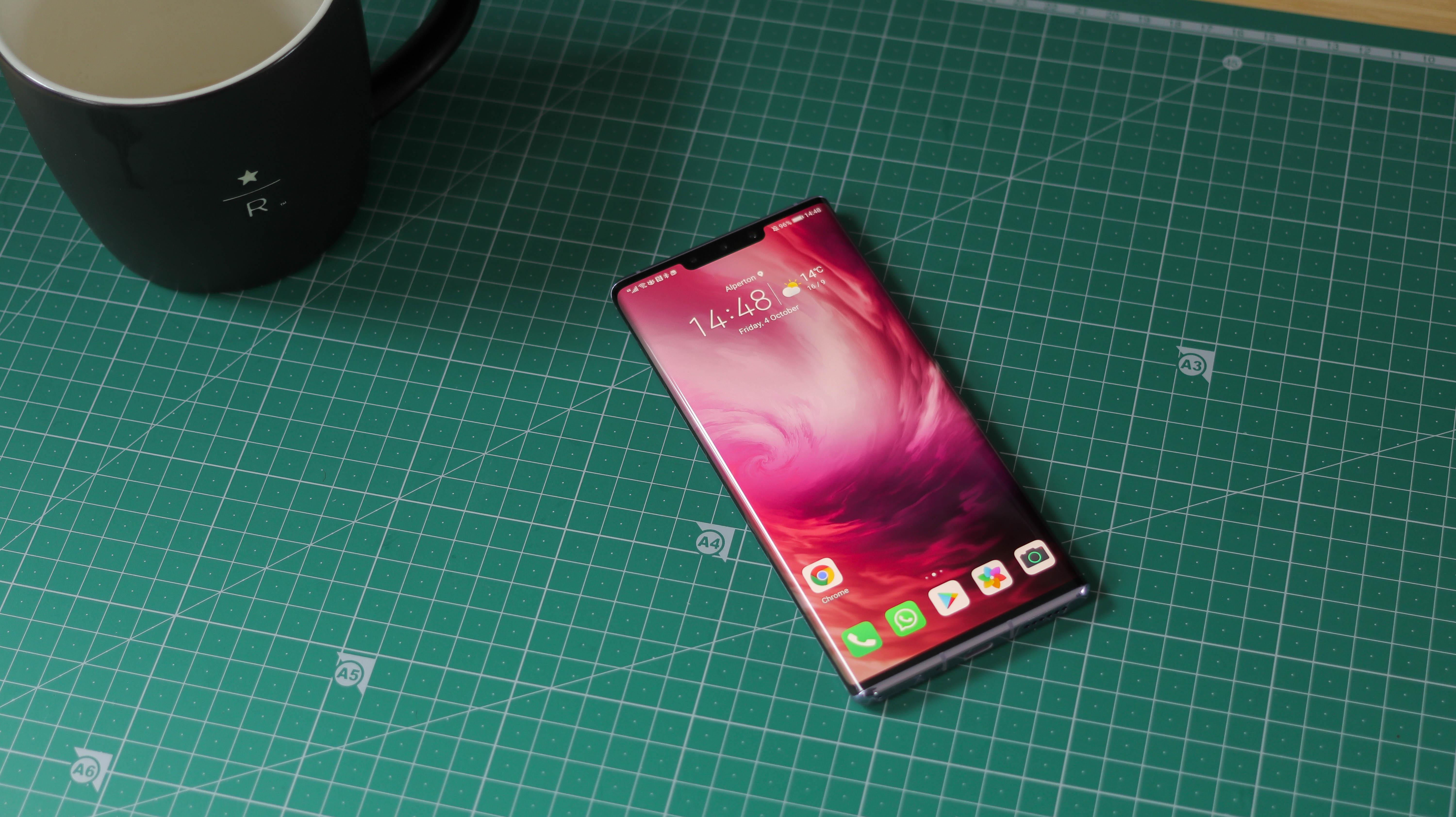Why you can trust TechRadar
Battery life
- 4,500mAh capacity lasts up to two days
- 40W SuperCharge charger included
- 27W reverse wireless charging
With a 4,500mAh battery, the Mate 30 Pro may be one of the best smartphones around from a power point of view.
A 90-minute HD video played back at maximum brightness only drained it by 5% - that’s sensational, topping our flagship leaderboard, but the Mate 30 Pro’s battery highs don’t stop there.
First up, wireless charging; with speeds of up to 27W - Huawei’s latest flagship has higher charging rates than Apple’s iPhone 11 and iPhone 11 Pro do when they're plugged in - they cap out at 18W. If you do want to tether your Mate 30 Pro to a wall, you’ll benefit from 40W SuperCharge tech, which can fill it up from flat in under one hour, 15 minutes.

Within the settings, there are standard Huawei power-saving features which go a step beyond stock Android. These include Power Saving mode, Ultra Power Saving mode, App Launch (so you can set what apps auto-start), and power consumption details.
This is also where you can toggle Performance Mode on or off - for when you have some battery to spare and want maximum gaming performance, and you can fire up reverse wireless charging here too.
Unsurprisingly, we easily made it through a full day of intense use with the Mate 30 Pro with enough power to get well into day two. Meanwhile, light users shouldn’t have much trouble getting 48 hours out of it.
Camera
- 40MP + 40MP wide/ultra-wide combo
- 8MP 3x telephoto camera + ToF fourth camera
- 32MP selfie camera
At Huawei’s launch event for the Mate 30 Pro, the cumulative 120MPs across the front and back were coupled with lofty promises and incredible stills and video samples being flashed up on-screen. Since then, Apple has unleashed the iPhone 11 Pro, which finally has a night mode, and the Pixel 4 has been leaked far and wide.
Sign up for breaking news, reviews, opinion, top tech deals, and more.
That said, Huawei instantly promises something the others don’t - pixel-power. While the Mate 30 Pro shoots 10MP images by default, it can crank that number up to full 40MP resolution for shots taken in great light that you might want to blow up.
For the most part, the benefits of shooting in 10MP are numerous though; lower-res shots have better dynamic range, less noise and take up less space.

The Mate 30 Pro’s camera array consists of a 40MP wide camera with an f/1.6, 27mm lens loaded up with optical image stabilization (OIS). The telephoto camera gets you a 3x zoom, has an 8MP resolution and features an f/2.4 lens and OIS, while the new ultra-wide cinema camera has a 40MP resolution, 18mm focal length and an f/1.8 aperture.
Images captured in auto mode across cameras are loaded up with impact - colors are zesty, dynamic range is fair to good and detail is ample, with accurate focus. Huawei suggested the Mate 30 Pro can focus as near as 2.5cm, though we found it to be more like 4cm, but even so, given the fact all three lenses pack autofocus, it’s still a versatile macro snapper.
The ultra-wide angle camera can grab plenty of detail and impressive dynamic range, though in very challenging conditions, we noticed a lot of purple fringing, which is a real shame and puts its ultra-wide firmly behind the iPhone 11 Pro for photos. When it gets a shot right though, it’s still one of the best ultra-wides around.

The telephoto camera, however, is bettered only by that of the Huawei P30 Pro and Oppo Reno 10x Zoom, and does a fantastic job across both photo and video of getting you in on far away action and keeping things steady.
Where the Mate 30 Pro still manages to stay on top is night mode. Unlike many other flagship smartphones, it doesn’t force you into a different mode to shoot excellent low light images, and when you do fire up the dedicated night mode, it captures unreal dynamic range, even if its color accuracy isn’t always perfect.
Also worth noting, unlike the Sony Xperia 5, for example, which makes night-time images look like they were taken at night, the Mate 30 Pro does brighten them up a lot, which might not be to everyone’s taste.

As for video, it’s shot at up to 4K 60fps, and with OIS across the wide and telephoto lenses, is held together fantastically. The widest ‘cine-camera’ isn’t as ultra-wide as those of the Mate 20 Pro or Galaxy Note 10, but neither does it have a GoPro-esque ultra-wide distortion, and it does a decent job of noise handling.
Video quality impresses across lighting conditions, and while it isn’t great in the dark by DSLR or mirrorless camera standards, it beats other smartphones hands-down.
There’s also incredibly slow 7680fps slow-motion capture at 720p - an excellent party trick when coupled with a lighter and a technological marvel in well-lit conditions, but in most environments, it’s actually too slow, virtually stopping time completely.
Meanwhile, the front camera captures selfies at a sharp 32MP, or video at 1080p 30fps. Photo quality is great and works well in portrait mode, but with no autofocus or 4K capture, it isn’t as versatile a selfie camera as that of the Samsung Galaxy S10.
Camera samples









Current page: Battery life and camera
Prev Page Introduction, design and display Next Page Anything else I should know?
Basil Kronfli is the Head of content at Make Honey and freelance technology journalist. He is an experienced writer and producer and is skilled in video production, and runs the technology YouTube channel TechEdit.
